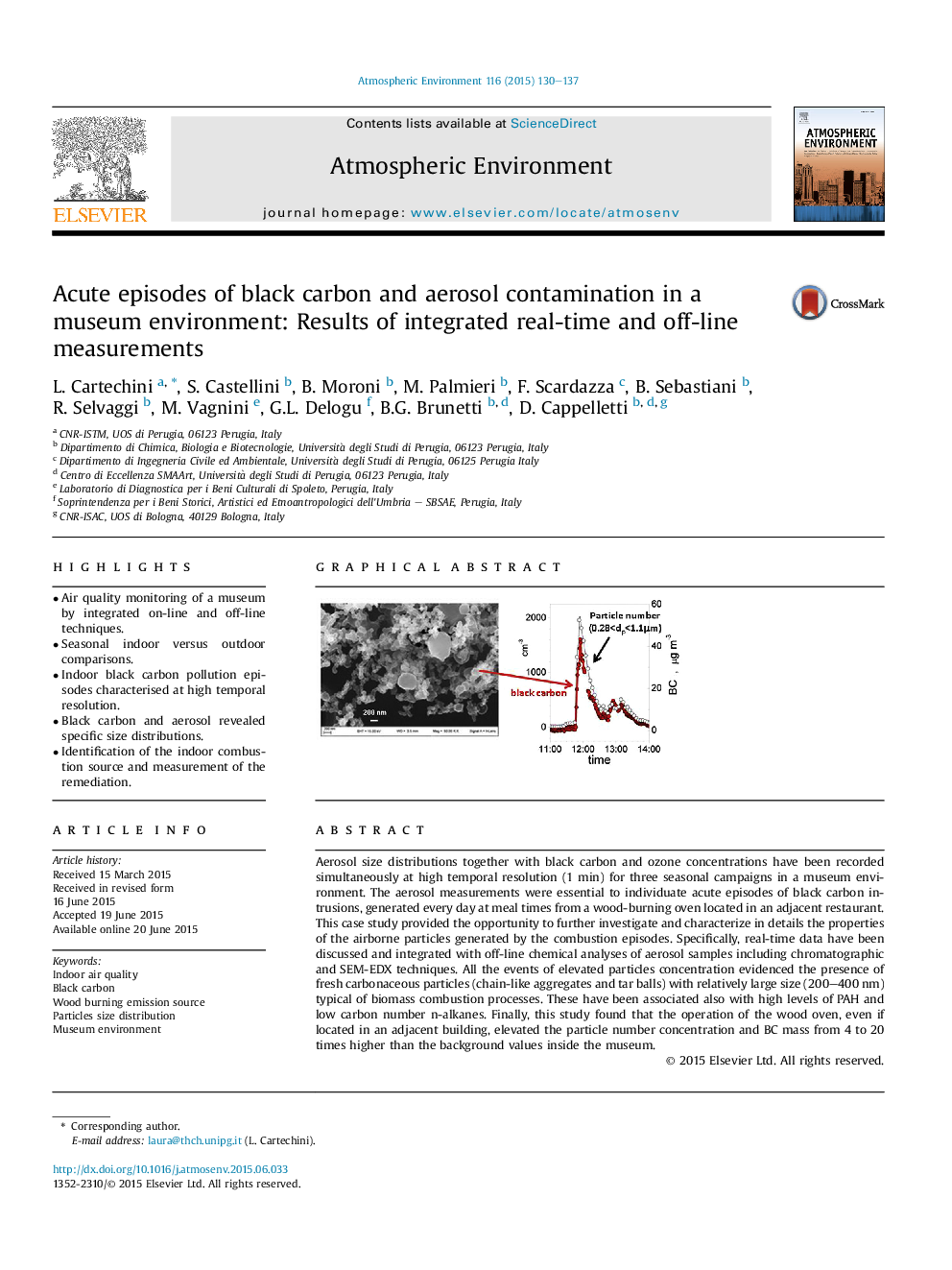| Article ID | Journal | Published Year | Pages | File Type |
|---|---|---|---|---|
| 4438122 | Atmospheric Environment | 2015 | 8 Pages |
•Air quality monitoring of a museum by integrated on-line and off-line techniques.•Seasonal indoor versus outdoor comparisons.•Indoor black carbon pollution episodes characterised at high temporal resolution.•Black carbon and aerosol revealed specific size distributions.•Identification of the indoor combustion source and measurement of the remediation.
Aerosol size distributions together with black carbon and ozone concentrations have been recorded simultaneously at high temporal resolution (1 min) for three seasonal campaigns in a museum environment. The aerosol measurements were essential to individuate acute episodes of black carbon intrusions, generated every day at meal times from a wood-burning oven located in an adjacent restaurant. This case study provided the opportunity to further investigate and characterize in details the properties of the airborne particles generated by the combustion episodes. Specifically, real-time data have been discussed and integrated with off-line chemical analyses of aerosol samples including chromatographic and SEM-EDX techniques. All the events of elevated particles concentration evidenced the presence of fresh carbonaceous particles (chain-like aggregates and tar balls) with relatively large size (200–400 nm) typical of biomass combustion processes. These have been associated also with high levels of PAH and low carbon number n-alkanes. Finally, this study found that the operation of the wood oven, even if located in an adjacent building, elevated the particle number concentration and BC mass from 4 to 20 times higher than the background values inside the museum.
Graphical abstractFigure optionsDownload full-size imageDownload high-quality image (237 K)Download as PowerPoint slide
